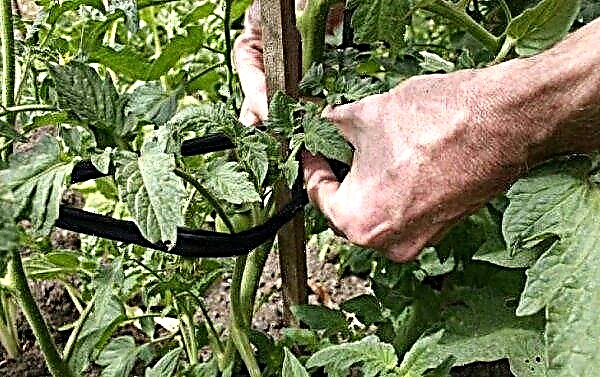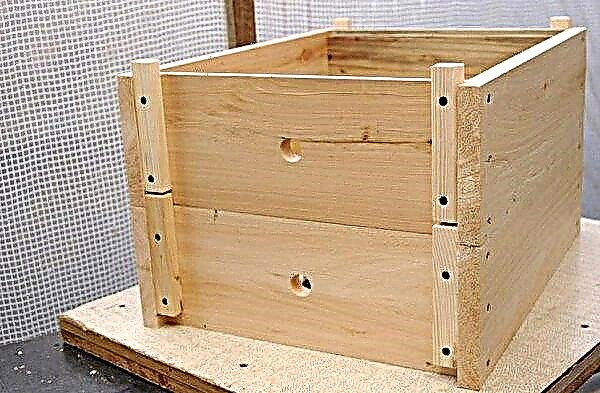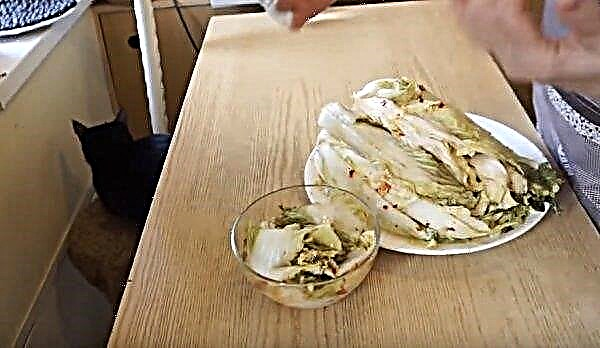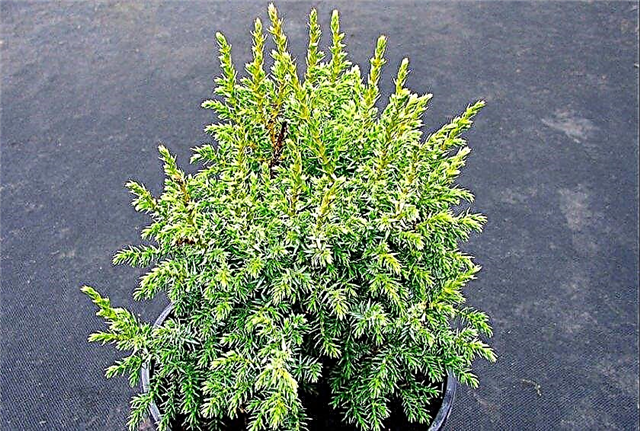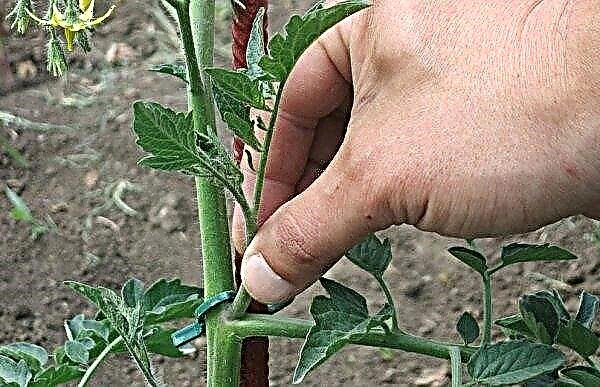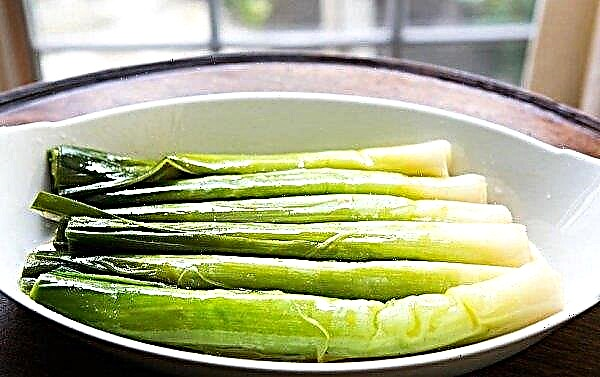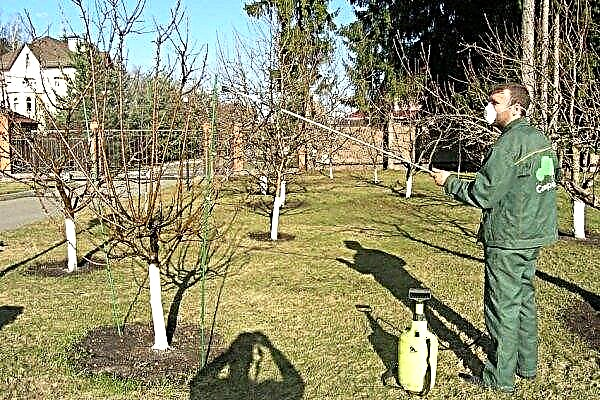Care for the apiary is not possible without special protective equipment. Therefore, on the farm, every beekeeper has overalls in which he works with insects. Today, beekeepers have a wide selection, because the market offers a wide range of protective clothing for them: various cut overalls, jackets, trousers, robes, arm ruffles, hats and gloves. How to choose a high-quality and comfortable suit from this variety, what elements are required in it, find out from the review below.
Advantages of a protective suit
The main function of overalls for the beekeeper is to protect his body from the bites of honey bees while caring for the hives. This form of cut does not include open areas. It is made of dense fabric, fastens with a zipper, and its cuffs should fit snugly.
Important! The danger is accompanied by cases in which the insect stings in the neck, throat, and oral cavity, since in soft tissues the edema arises faster and can cause difficulty breathing.
Often there are models that restrict movement, impair visibility and interfere with work. Given the bee aggressiveness, the degree of which depends on the type of insects and the conditions in which they live, it is important for the beekeeper to choose comfortable clothes. The undoubted advantage of protective suits for beekeeping is the ability to choose the appropriate configuration, any style and color.
- It is important to ensure that the option you like clearly meets the basic requirements:
- It was durable, protected from bee stings;
- possessed water-repellent properties (cases when the beekeeper has to work with hives in rainy weather);
- the fabric from which the overalls are made should allow air to pass through and allow the skin to breathe;
- to be flammable (relevant in cases of a spark from a fired smoker on clothing).
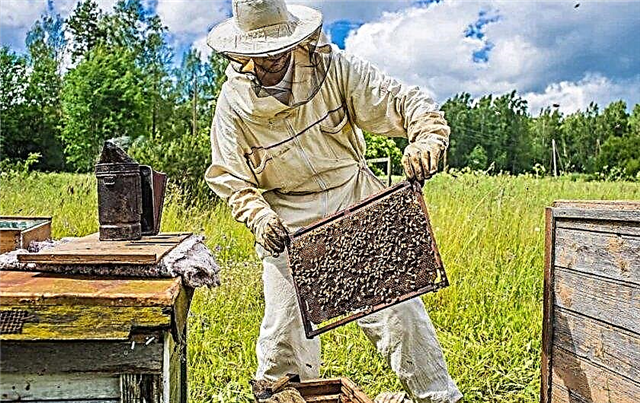
Which suit to choose for the apiary?
The modern range of apiary equipment is so great that even experienced beekeepers find it difficult to make the right choice.
Based on the often made mistakes and experience experienced, we can draw the following conclusions about a comfortable form:
- Since the apiary is active in the spring and summer, natural cotton fabrics are preferred. It is important that they contribute to natural thermoregulation, are easily purged, protect not only from bee stings, but also from overheating of the beekeeper's body. Therefore, it is better to choose light hygroscopic models.
- The protective form must be chosen one size larger than casual wear. This is due to the fact that you will wear it on top of what you wear at home. Before buying, be sure to try on equipment. If it’s hard for you to move, this is not your option.
- Avoid fleecy, woolen, as well as dirty products. Extraneous odors and nap irritate insects (it is difficult for them to move, because the paws are tangled in the “shaggy” fibers), which makes them more aggressive.
- On the cuffs of the shirt and trousers (overalls) must be elastic, protecting from the penetration of insects under clothing.
- The suit should be tightly fastened. It’s better to use a zipper, because even close buttons cannot prevent the bees from getting inside. In addition, the latter option is inconvenient when unfastening and requires a lot of time.
- The protective headgear must be equipped with a veil net through which the surroundings are clearly visible. Many beekeepers note the effectiveness of black material compared to white and color.
- It is advisable to choose a one-piece jumpsuit from twill, medical fabric or calico. Preferred are models with many pockets (for ease of use), a front zipper that closes with a velcro fabric flap on top, and an elastic at the waist. This is a universal option that you can put on underwear in the heat, and in home clothes in cold weather.
Video: which suit to choose for work in the apiary
Costume set
The standard equipment of the beekeeper consists of overalls (or jackets and trousers), a protective mask and gloves. Some sets include 2 headgear - European and domestic standard.
Did you know? To collect a spoonful of honey, about 200 bees must work continuously throughout the day.
Overalls
This one-piece spacious product made of dense natural fabric. It can be of any cut and style. On the front there is a zipper-fastener, behind the waist is tightened with an elastic band. It is also available on the cuffs of long sleeves.
Jacket
This part of the beekeeper's outfit is often made from natural linen. As well as the upper part of the jumpsuit, it provides for a high collar, long sleeves and a front zipper on the fastener. A wide elastic band is sewn into all cuffs and the bottom of the product. The top of the jacket is fastened with Velcro. Usually a mask is tucked under it.
Mask
Experienced beekeepers consider euromask to be the best headdress.
It differs from the standard:
- removable jumper, due to which it does not fold, and the mesh does not lean against the face;
- helmet-shaped;
- rigid frame.
The domestic classical model is a wide-brimmed hat with a veil mesh sewn to it.
Important! When choosing a protective mask, avoid the mesh with small cells, because after working it may hurt your eyes..
In the case of the acquisition of overalls, this element of the overalls is mounted on an elastic band to the neck ring. It is round and square. There are models without a top, they are attached to a special headgear
Beekeeper hat
This is an essential accessory of a beekeeper costume. In most cases, it is made from colored chintz or other natural absorbent fabrics. Make sure that the headgear’s fields are not narrow, as bees are more difficult to work with due to the snug fit of the mask to the face. Beekeeper hat and mask.
Beekeeper hat and mask.
Gloves
For apiary need special gloves. You can’t work here in garden or other household clothes. Hand protection is sewn from soft leather, synthetics, or rubberized materials. Their feature is a long sleeve with a rubber retainer. According to many consumers, this accessory in working with beehives is extremely inconvenient, but it is extremely necessary to protect against ravaged insects.
Tips from experienced beekeepers
For the convenience and extension of the life of apiary equipment, experienced beekeepers advise.
- Choose protective overalls with a removable mask. This nuance is advantageous in that the hat can be washed separately from the suit. In addition, it is not machine washable.
- Prefer reinforced wide-brimmed masks that hold well on the head and do not interfere with the care of the hives.
- To increase the temporary resource of workwear, be sure to equip it with false elbow pads and knee pads (such as a patch).
- If you are used to working with bees without gloves, sew on the cuffs of the sleeves holding the elastic bands. Their relevance will be palpable when there is a need to reach out to something and at the same time a part of the hand will be exposed.
- With heavy sweating, for additional ventilation, you can install a zipper net in the armpit and on the back.
- When ordering, always specify what the components of the kit are called, size, and be sure to include an additional mask in the delivery.
- When working in an apiary, it should be remembered that bees have an increased sense of smell and react aggressively to the sharp smells of perfumes, sweat, alcohol. Most often, their bites occur in the area of the hands and face.
Did you know? During a fire, the bees exacerbate the self-preservation instinct, and they begin to stock up on honey, not paying attention to strangers. Therefore, all beekeepers fumigate him with smoke before working in the hive.
Now you know what the beekeeper’s equipment consists of, what accessories are important in it, and which you can do without. The right and balanced choice for you!

